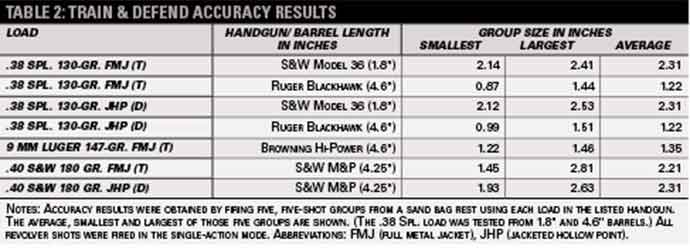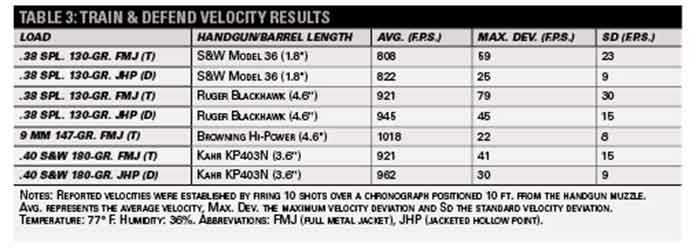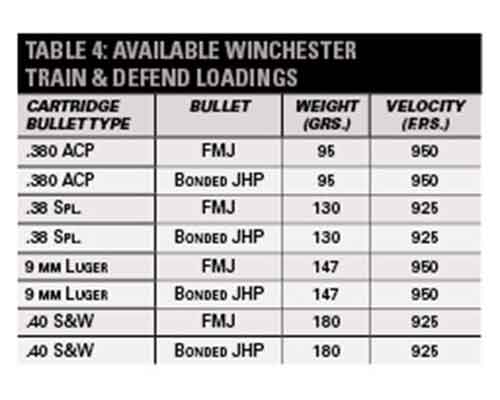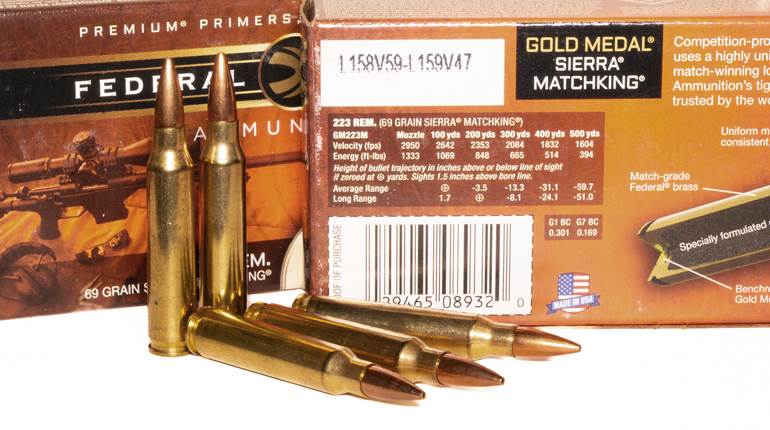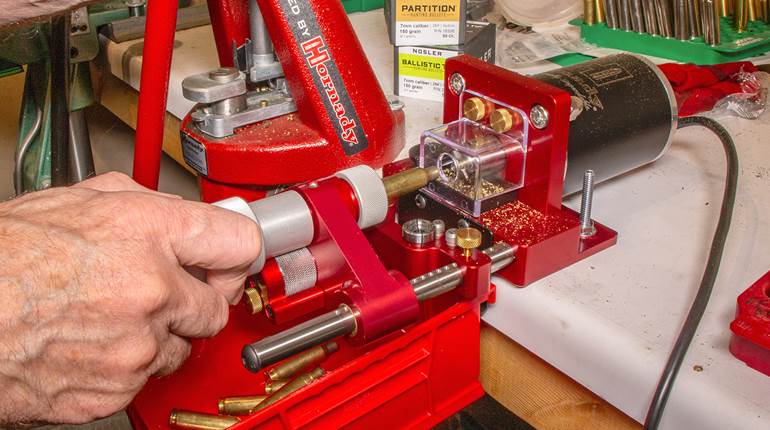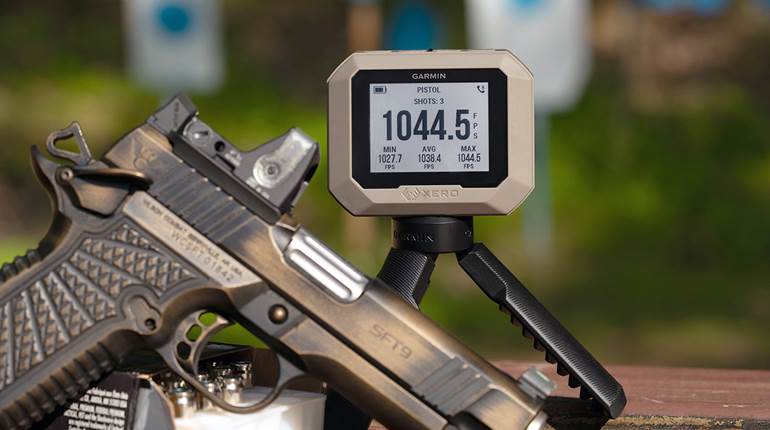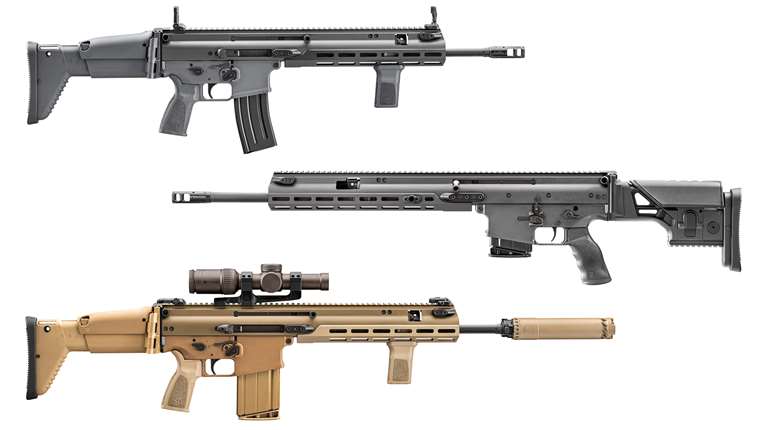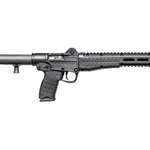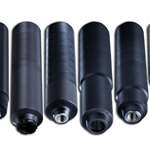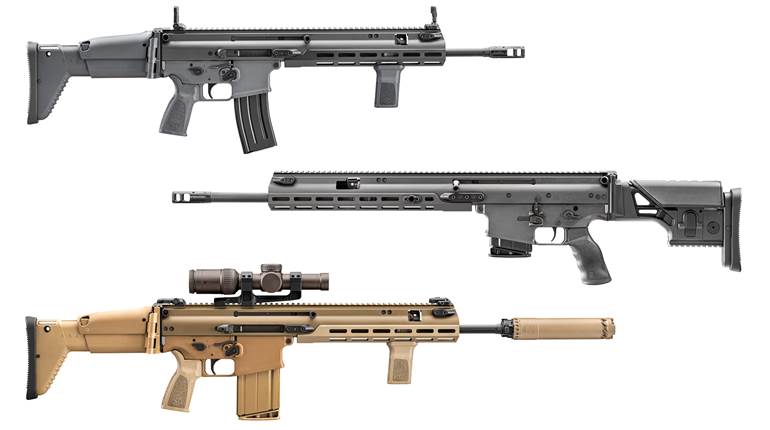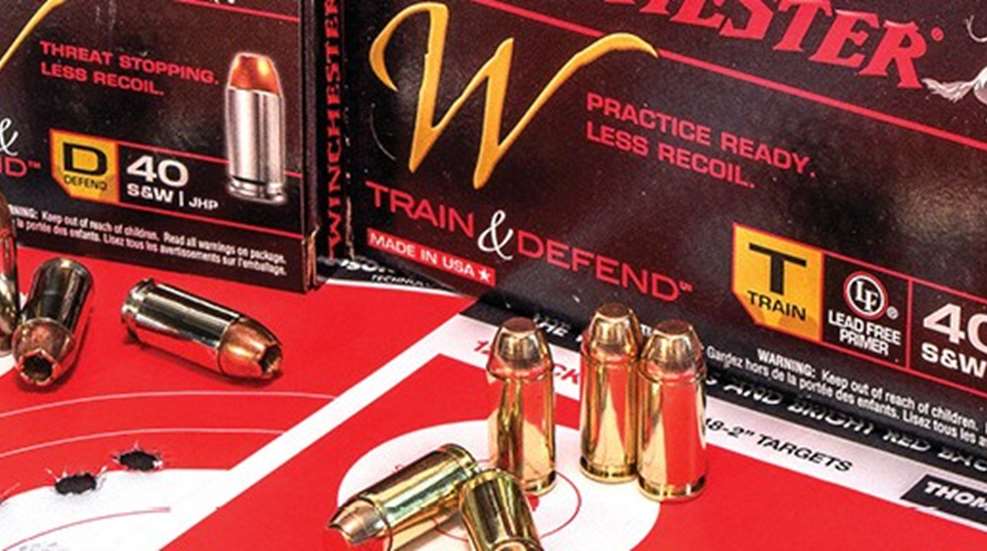
It’s likely that while you’re reading this, there’s a shooter somewhere standing in front of the counter at his local gun shop. A colorful array of cardboard boxes is visible as he gazes in wonderment at the assortment of ammunition adorning the wall. All the shooter needs is a few boxes of practice ammunition and a box of carry loads. Ideally, each would mimic the other with regard to accuracy, power and speed. If the choice were that simple, the buying decision would be an easy one, but it hasn’t been until now.
Winchester recognized that ammunition options are vast, and the company also knew that in the past several years the number of folks carrying handguns for personal protection has increased exponentially. Many of these savvy citizens are women, and many are new to firearms. For them, ammunition selection can be confusing. Winchester’s solution to the problem is its new Train & Defend line of handgun ammunition.
The company’s goal was to offer a practice and carry line of ammunition that shoots to the same point of impact, generates the same (comfortable) level of recoil, and is easy to identify on the shelf. The company wanted to simplify a complex problem while delivering premium quality and performance. That’s not an easy task with any product or market.
First, Winchester created clearly recognizable and distinct packaging. The black boxes that Train & Defend ammunition come in are nearly identical—with the exception of a few minor differences. A large “T” (for Train) or “D” (for Defend) paired with a photo of the cartridge instantly differentiates between the training and defensive loads. The cartridge images on the front are also distinguishing in that the “T” loads have a brass case and the “D” loads have a nickel-plated case, just like the actual cartridges—which should eliminate confusion about them, in or out of the box. Next to the cartridge designation you’ll also find a bullet description of either “FMJ” for the “T” loads or “JHP” for the “D” loads.
Winchester “T” loads utilize brass cases and full-metal-jacket bullets, but they are also loaded with lead-free primers, which are stipulated by some indoor ranges. The Winchester “D” loads have nickel-plated cases and are topped off with a bonded, jacketed-hollow-point bullet. Available chamberings include .380 ACP, .38 Spl., 9 mm Luger and .40 S&W. The conspicuous absence of .45 ACP might seem perplexing, but it is not yet a prevalent cartridge in subcompact handguns. “T” loads will come in 50-round boxes and “D” loads in 20-round boxes. Retail prices will range between $19 and $26 per box.
Being the ammunition geek that I am, and realizing the difficulty of what Winchester hoped to accomplish with the Train & Defend Line, I was eager to test the concept. Winchester provided five loads for evaluation. Included were Train and Defend loads for the.38 Spl. and .40 S&W along with the Train load for the 9 mm Luger. The question was how to best approach the investigation and, after some deliberation, I turned to the founder of the Modern Technique of the Pistol, the man to whom all things related to defensive handgunnery can be tracked back: the late Col. Jeff Cooper.
The Gunsite Academy founder and recognized defensive firearm guru, Cooper’s credo was “DVC”—diligenta, vis, celeritas—which is Latin for accuracy, power, speed. Cooper considered DVC to be the essential elements of defensive or combat handgun shooting and when evaluating ammunition to be used for training and protection, it just might be the best manner of assessment.
The accuracy requirements for a defensive handgun are not as stringent as you might imagine. Considering that most encounters involving a defensive handgun are often at arms’ length, being able to hit a quarter at 25 yds. is not a prerequisite for survival. However, with ammunition costing between 50 cents to a dollar per round, shooters expect and deserve precision. And, too, precision can build confidence.
If you wanted to establish an accuracy standard for defensive handgun ammunition, five shots inside a 5" circle at 25 yds., from a solid rest would not be unreasonable. Less precision would be questionable and more merely added insurance. A specification just as important but often overlooked is the necessity for handguns to place bullets fired from training rounds at the same point on the target as bullets fired from defensive loads. You certainly do not want to train with ammunition that shoots to a different point of impact than the load you carry.
I used four handguns to test the five Winchester Train & Defend loads. Each was shot from a sandbag rest at 25 yds. by firing five consecutive, five-shot groups. Just as importantly, targets shot with the Winchester Train were overlayed on targets shot with the Winchester Defend in order to ascertain any shift in point of impact.
The performance of all five loads was stellar on several accounts. For starters, out of 35 groups fired, not a single group exceeded 3". Secondly, the average group size variance between the practice (Train) and carry (Defend) ammunition, for all loads tested, was only 0.10". Most importantly, there was no discernible difference between the point of impact of the Train loads and the Defend loads; their accuracy performance was, for lack of a better description, identical.
Conclusion: Winchester Train & Defend ammunition is capable of delivering all the necessary accuracy for defensive handgun training and protection, and the Train and Defend loads will shoot to the same point of impact.
When speaking of the power generated by defensive handgun ammunition, there are essentially three elements at play. The first is bullet energy, the second is recoil and the third is terminal performance. Energy is determined by bullet weight and velocity. Both work together with bullet construction to determine terminal performance.
Muzzle energy can be directly correlated to recoil. The more energy generated by a certain load, the more recoil impulse the shooter will experience. It’s physics, you learned it in middle school; for every action there is an equal and opposite reaction. Winchester wanted to limit the recoil impulse of Train & Defend ammunition so it would be comfortable to shoot in compact, concealable, carry-type handguns. Some might argue that this was done just to appeal to women, but, in truth, few shooters like to be punished every time they pull the trigger.
Terminal performance is often referred to in terms of “stopping power.” Stopping power is really nothing more than a result of the diameter and depth of the hole a bullet makes as it relates to shot placement. Energy can be objectively calculated with a chronograph, recoil is subjectively felt in hand and terminal performance can be speculatively projected with10 percent ordnance gelatin.
Muzzle energies produced by Winchester’s Train & Defend loads could be considered standard for the loads tested. This is not +P, wrist-snapping ammunition. However, with regard to terminal performance, Winchester used the same bullet design for the Defend loads that is used in the personal-protection-specific Winchester PDX1 loads that perform so well in the FBI handgun ammunition selection trials.
According to Michael Stock, Winchester Ammunition’s center-fire senior product manager, “The only difference between the Winchester Defend ammunition and PDX1 Defender is velocity. All the Winchester Defend offerings feature the lower velocity/lower recoil levels that match the velocity on the Winchester Train offerings. The more we worked with the PDX1 Defender technology, the more we were impressed with the consistency of bullet performance even at low velocities. This pushed us to expand that bullet performance envelope to the lower [velocity] levels seen with Winchester Train & Defend.”
My own testing in 10 percent ordnance gelatin, with and without a two-layer denim barrier, verified Stock’s claims. Even at standard velocities both the .38 Spl. and .40 S&W Defend loads performed very well. The 180-gr., .40 S&W Defend load easily met the benchmark of 12" of penetration, 1.5 times expansion and 80 percent weight retention. The .38 Spl. Defend load exceeded the expansion and weight-retention thresholds but, like almost all standard-velocity, expanding .38 Spl. loads, came up a tad short in the penetration category.
Conclusion: Winchester’s Train & Defend ammunition meets or exceeds the established standard for terminal performance, without delivering unnecessary or uncontrollable recoil.
When it comes to ammunition of any sort, speed—velocity—matters. Whether you are of the heavy-and-slow or light-and-fast bullet mindset, for your ammunition to be accurate and for it to deliver consistent terminal performance, it will need to provide consistent velocities. Just as importantly, if you’re trying to make a defensive load shoot to the same point of impact as a training load, you’ll also need similar if not exact and consistent velocities.
A chronograph easily sorts out any mystery in velocity. All five Winchester Train & Defend loads submitted for review were fired over a chronograph positioned 10 ft. from the muzzle. Ten shots were fired with each load to establish an average velocity, a maximum velocity deviation and a standard velocity deviation. The results explain the precision with which these loads impacted the target, and they also show how the point of impact between the Train & Defend loads remains consistent. The average variance between the average muzzle velocities of all the Train & Defend loads tested was only 26 f.p.s., which is incredible when you consider that the maximum velocity deviation in a 10-shot string for many defensive handgun ammunitions can be higher than 50 f.p.s.
Additionally, the average standard deviation for all seven loads tested out of five different handguns was only 15 f.p.s. I’ve chronographed a lot of handgun ammunition—training loads and defensive loads—and this level of consistency is, at best, excellent and at worst, uncommon. It’s clear that the engineers at Winchester spent time on load development, and it’s also clear that their ammunition assembly processes are first-rate.
Conclusion: Winchester’s Train & Defend ammunition produces extremely consistent velocities with individual loadings and those velocities are comparable, if not indiscernible, between the Train and Defend loads for each chambering.
What Winchester has done with the Train & Defend line of ammunition is something that every ammunition manufacturer may attempt to copy. If you’re going to carry or trust a handgun for personal protection you need to practice with that handgun to ensure that it reliably functions with the selected load. And, when you practice, you should be doing so with the confidence that the ammunition you will rely on in a bad situation will allow you to shoot to the same point of impact with the same recoil impulse and will deliver trustworthy terminal performance.
On the range and when shooting over a chronograph, you could essentially mix a cylinder or magazine with Winchester Train and Defend loads and your target or chronograph would never know the difference. It should be clear that with its Train & Defend line, Winchester has simplified, if not perfected, the defensive handgun ammunition selection process.